Anti-ship cruise missile P-15
The development of a promising missile system for the Navy began in 1955. The creation of a new type of missile was assigned to the OKB-155 (OKB-155-1) branch. A.Ya. was appointed as the chief designer. Bereznyak. This design organization already had some experience in the development of cruise missiles. For example, it was she who created the KS-1 Comet projectile, which was used aviation and, after some modifications, by the fleet. The new project, which received the designation P-15, should use both existing experience and new ideas.
The goal of the new project was to create a relatively compact and light anti-ship missile capable of striking surface targets at ranges up to 35-40 km. The product should be equipped with a liquid-propellant rocket engine, autopilot and active radar homing head. In addition, in the future there was a variant of a rocket with a heat seeker. The P-15 rocket was proposed to be equipped with strike weapons for ships of various classes. In addition, the possibility of equipping such weapons with promising missile boats, the development of which could begin in the very near future, was considered.
According to the results of preliminary studies and taking into account the available experience, the overall appearance of the promising missile was formed. It was supposed to be a normal aerodynamic projectile with a foldable (for transportation) wing and a cruising main engine. A cylindrical fuselage of great elongation with an ogival head fairing and a conical tail section, at the end of which an engine nozzle was removed, was proposed. In the central part of the sides, below the wing, there were oblong fairings for some of the internal units. No more protruding parts on the fuselage were envisaged.
In the central part of the fuselage, it was proposed to mount the mid-range trapezoid wing of a large sweep. The first version of the P-15 rocket had an unfolded wing, which imposed certain restrictions on the size of the launcher. With subsequent upgrades, it was possible to develop a wing opening machine, which had a positive effect on some features of the entire complex. On the rear edge of the consoles were located ailerons to control roll.
In the rear part of the fuselage, it was necessary to fasten aggregates of the plumage, which had a similar shape. On the upper surface there was a keel of large sweep and small elongation, and on the sides, stabilizer planes were installed, installed with a large negative transverse V. On the rear edge of all the planes of the tail there were steering wheels for pitch and yaw control.
Under the tail of the fuselage it was proposed to suspend the starting solid-fuel engine. It had a cylindrical body with a tail nozzle. Because of the conical shape of the tail of the rocket and the installation of the engine parallel to its surface, the nozzle was located at an angle to the axis of its body.
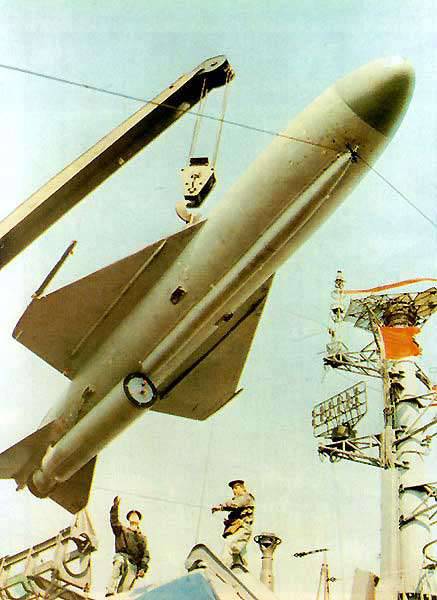
Loading missiles P-15 on the ship. Photo Rbase.new-factoria.ru
To exit the launch container with the subsequent initial acceleration, the rocket had to be equipped with a solid-propellant starting engine of the type SPRD-30. This device could develop traction up to 28-30 t and worked within a few seconds. After producing the fuel, the starting engine was proposed to be dropped. The rocket was supposed to continue flying with the help of a mid-flight power plant.
In the project of the P-15 rocket, in contrast to some other similar developments of that time, it was decided to abandon the turboprop propulsion engine and use a liquid-propellant rocket engine. Especially for the new rocket under the guidance of A.M. Isaeva developed the C2.722 engine using TG-02 (so-called samin) fuel and AK-20K oxidizer (a mixture of nitric acid, nitrogen tetroxide and some other components). A characteristic feature of the new engine was the ability to work in two modes. On the accelerating mode, a large thrust was provided, and the speed control mode allowed saving fuel and increasing the flight range without loss in other characteristics.
To control the P-15 rocket throughout the flight, a set of autonomous tools was developed, including the AM-15A autopilot, a barometric altimeter and a homing head. To search for large surface objects it was proposed to use an active radar homing head such as DS-2. This device could search for targets at distances up to several tens of kilometers and was responsible for pointing the missile at the target in the final leg of the flight. When firing at the destroyer target, the detection range reached 20-24 km.
A new anti-ship cruise missile received a high-explosive-cumulative warhead 4-XXNX with a total weight of 15 kg. Such combat equipment made it possible to inflict serious or fatal damage to various surface ships. In the case of small ships or boats, a single missile was enough to flood the target. The use of special combat units was not provided.
The total length of the P-15 rocket, ready for launch, was 6,55 m, the wingspan in the flight position was 2,4 m. The maximum case diameter was 0,76 m. discharged after fuel generation.
After the launch and initial acceleration, the rocket had to reach a height from 100 to 200 m and follow the target at a speed of the order of 320 m / s. The stock of liquid fuel and other features of the product made it possible to hit targets at distances from 8 to 40 km. In this case, the first part of the trajectory was overcome by the commands of the autopilot, and in the final segment the homing head was to control the rocket.
The development of the P-15 project was completed in the 1956 year, after which preparations for testing began. For the first inspections in a land test site, a special stand was built. The stand design was developed taking into account the peculiarities of the project of a promising rocket boat, which in the near future was to be the carrier of a new weapon. In this way, it was proposed not only to test the new rocket, but also to test the main aspects of its interaction with the launch boat.
The first carrier of the P-15 missiles was to become a torpedo boat of the 183 project, which should have been equipped with some new units. It was proposed to remove the stern artillery installation and the torpedo tubes mounted next to it from the boat. Instead of them, it was planned to install two hangar-type start-up units in the stern of the boat. On a special farm with the required angle of elevation two container-hangars for rockets were to be mounted. A characteristic feature of these products was a large width, which made it possible to load missiles without folding the wings.
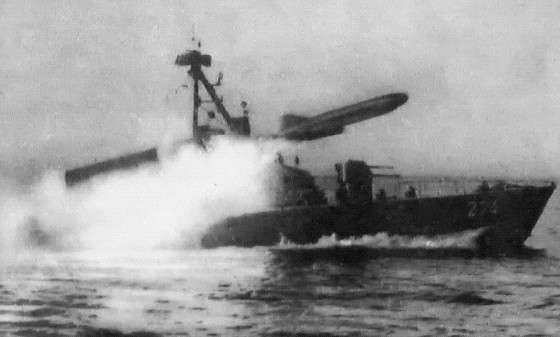
Launch of the П-15 rocket with the 183-Р launch. Photo of Wikimedia Commons
To test the new missile at one of the landfills, a special stand was built, which was part of the design of the 183 boat with launchers. In order to verify the prospects of certain decisions, the specialists produced two models of the wheelhouse of the boat, metal and wooden. The equipment of such a stand allowed the preparation of rockets and subsequent launch.
The first launch from a booth simulating a missile boat took place in October 1956. This stage of testing continued until August of the following year. During several test launches, it was possible to test the operation of various launcher and rocket units, as well as to determine the more convenient design of boat units. So, after several launches, the wooden layout of the cabin, exposed to reactive gases, ignited and burned. Steel felling, in turn, successfully passed all the checks and was recommended for use on serial boats.
According to the results of the ground tests, some adjustments were made to the project of a promising rocket boat that was being developed at that time. First of all, they concerned the design of launchers and containers for storing rockets. Check the correctness of these improvements planned for several experienced boats. This version of the boat received the designation "183-E."
Solely for the testing of the missile complex, the plant number XXUMX built two boats of the project 5-E. They were the original torpedo boats with new weapons and a set of related equipment. Two test boats were built by the fall of the 183 year. October 1957 16, one of them performed the first launch of the rocket. Subsequently, the tests were continued, which made it possible to complete the adjustment of the rocket and other means of the complex.
At the end of 1958, the serial construction of missile boats of the new 183-P project was launched. Boats of this type received two launchers with hangar containers, each of which weighed about 1100 kg. The installations had rigidly fixed guides with a length of 2,75 m, installed with an elevation angle 11,5 ° relative to the deck. The design of the boat and launchers allowed to carry only two missiles. After using them, the boat was supposed to return to the base for reloading.
Information about the location of the target missile complex of the new type was supposed to receive from the radar "Rast". With the aid of the Klen fire control device, the combat course of the boat was determined at launch, the determination of flight parameters and the input of data into the rocket electronics. As a backup target targeting could be used optical sight type PMK-453. All necessary calculations and prelaunch preparation of the missile complex took 4 minutes.
The rocket boat of the 183-P project could launch P-15 missiles at speeds from 15 to 30 nodes and in waves to 4 points. At the same time, the defeat of surface targets at ranges up to 40 km was ensured. The power of the warhead was enough to inflict serious damage even to large ships.
As part of the P-15 project, a variant of a rocket with a thermal homing head was developed. The P-15TG rocket with the GOS Condor was presented for testing in the middle of the 1959 year. The updated rocket was supposed to go to the target area using an autopilot, then turn on the thermal seeker and search for a target for later aiming at it. GOS "Condor" was equipped with a movable lens of the receiving device, capable of swinging in a horizontal sector of width 5 °. At the same time, the water area was monitored and objects that differed from the background in a higher temperature were searched for.
From 29 August to 28 October 1959, the boats of the 183-E project carried out 10 test launches of P-15ТG missiles. One of them ended in failure due to the failure of the fixtures of the starting engine: the rocket did not drop it and was unable to continue the flight. In the course of other launches, it was possible to determine that the Condor system was able to find a cruiser target moving at a node's 24 speed, from a distance of 10 km in the daytime and 5 km in the night.
According to the test results of 1958-59, the P-15 and P-15TG cruise missiles were recommended for use. Due to a noticeable difference in characteristics, it was decided to adopt only a product with an active radar seeker. Rocket P-15TG, in turn, remained out of work. In 1960, the Council of Ministers issued a decree, according to which the P-15 rocket was put into service as a weapon for the 183-P missile boats.
The boats of the 183-P project were built from the late fifties to the mid-sixties. During this time, two shipyards handed over a new type of 112 boats to the customer. At the same time, since the early sixties, the construction of modernized boats of the 183-TP and 182-RTR projects was carried out. The built boats were operated for some time by the USSR Navy. Over time, due to the emergence of newer and more sophisticated technology, Soviet boats began to be transferred to friendly countries. Until the mid-seventies, nearly eight dozen boats were handed over to third countries. In addition, the 40 order boats of the 183-P project were built in China under license. There they were designated as "Type 040".
The second carrier of the P-15 missiles was the 205 project missile boat. A new project was developed in the second half of the fifties. In the 1960 fleet transferred the head boat of this type. From the previous project 183-P, the new one was distinguished by the presence of four launchers mounted on the sides in pairs in the center and in the stern. During the sixties, almost 275 boats of the 205 project in various modifications were transferred to the fleet. Part of this technology was sold abroad.
In 1965, a new modification of the missile under the designation П-15У was adopted. The main innovation of this project was the updated wing. To reduce the transport dimensions of the rocket, the wing was collapsible: a relatively narrow center-section was made stationary, and the arms could be folded down. In addition, an updated launcher with smaller lateral dimensions was developed. There is information about the work on the P-15UT project, implying the installation of a thermal homing head on the P-15U rocket. In relation to the P-15U product, the designation P-20 can also be used - under this name the missiles were exported.
By the beginning of the seventies, the design work on the P-15M Termit rocket was completed. The objective of this project was a deep modernization of the existing P-15U product with an increase in the basic characteristics. While maintaining the dimensions of the product at the same level and using the basic ideas of the design, as well as using a number of new components, it was possible to significantly increase the strike potential of the weapon.
The rocket with a launch weight of 2573 kg received a new solid-fuel SPRD-192 engine with enhanced performance. Instead of a barometric altimeter, radar was inserted into the control equipment. In addition, a new radar homing system DS-M was proposed. It was also proposed thermal SOS "Snegir-M". The updated control systems made it possible to fly to the target at heights of no more than 50 m with a speed of 320 m / s. The detection range of a “destroyer” target with an active radar head was brought to 40 km. The maximum flight distance was determined at the level of 80 km. To hit the target, a high-explosive-cumulative warhead 4Г51М weighing 513 kg or 375-kg a special product with a power of 15 kt was proposed.
The P-15M rocket could be used with the KT-97B and KT-138 small-sized launchers, which could be mounted on boats and ships of various types. Thanks to this, the new missile system was able to make a large number of boats and ships armed. The P-15M missiles were part of the 205, 1241 and 206-MR launch systems, the 56-U project destroyers, the 61 large anti-submarine ships, and the 1159 project patrols. Different carriers had ammunition from two to four missiles.
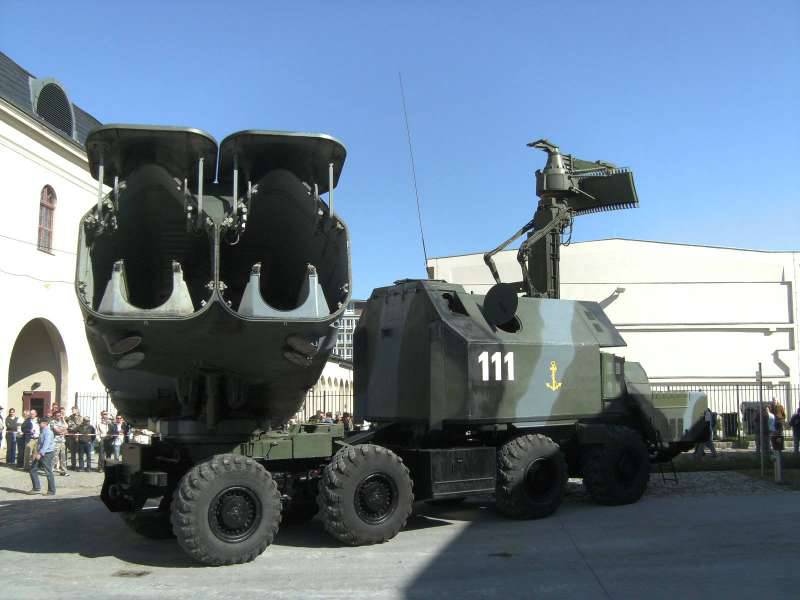
Launcher complex "Boundary". The containers are open, the missiles are not loaded. Photo of Wikimedia Commons
On the basis of the P-15M rocket for surface boats and ships, the Rubezh coastal missile system was developed. This system has rather high characteristics and thanks to this, it still remains in service with the coastal forces of the Russian Navy.
The P-15 family of rockets is still exploited in our country, however, for obvious reasons, all their launches are of a test or training nature only. Nevertheless, such weapons were repeatedly used by foreign countries. During the local conflicts of the second half of the last century, several dozen Soviet-made missiles were used.
The first case of combat use of a homing anti-ship missile in the world was the firing of P-15 products, carried out by boats of the 183-P project of the Egyptian Navy 21 of October 1967, during the so-called Wars of attrition. According to Egyptian data, the Israeli destroyer "Eilat" entered the territorial waters of Egypt, after which it was fired at with two P-15 missiles. Both products hit the target and drown it. According to Israel, the ship was in neutral waters, and after two missile hits it overturned. After some time, two more launches took place, as a result of which the destroyer finally sank.
After about three years, the Egyptian sailors again used the P-15 against the Israeli fleet. This time the goal was transport with a displacement of 10 thousand tons. In this case, the shooting was led by a boat of the 205 project.
In December, the 1971 of the year, the Indian fleet, which had at its disposal the boats of the 205 project, used 11 missiles of the П-15 family. 7 products were sent to surface targets, the remaining - to the coastal facilities. December 5 India launch boats successfully attacked the Pakistani destroyer Khyber and the minesweeper Muhafiz. December 9 held an attack on the port of Karachi, during which four ships were sunk, and the other two suffered from fragments and the effects of explosions. At the same time, three rockets attacked a refinery in the city of Coamari. According to reports, thermal missiles were used to guide missiles at oil tanks heated by sunlight during the day.
In the 1973 year, during the Doomsday War, Egypt again tried to use the P-15 missiles. At the same time, all 54 launches were unsuccessful, and the enemy was able to destroy seven rocket boats. Several factors could have led to this result, including the wrong tactics of using missiles and Israel’s widespread use of defenses.
In the context of the use of П-15 cruise missiles, the Iran-Iraq war is of great interest. The fact is that both countries involved in the conflict were armed with missiles of this type. Iraq had Soviet-made products, and Iran bought copies of them from China and the DPRK. The forces of the Iranian Air Force and Navy at the end of November carried out Operation Morvarid, during which the Iraqi forces were dealt a serious blow. Having been armed not only with P-15, but also American-made RGM-84A Harpoon missiles, differing from Soviet products with a greater launch range, Iran was able to strike at enemy ships from a safe distance. As a result, the Iraqi fleet suffered significant losses and was unable to inflict significant damage on the enemy.
The last known case of the combat use of the P-15 missiles dates back to the early nineties. During Operation Desert Storm, Iraq attempted to attack with such missiles the US battleship USS Missouri. One of the missiles lost its target due to the use of electronic warfare. The second was shot down by the British frigate HMS Gloucester using the Sea Dart rocket. It is noteworthy that this was the first case of the defeat of an anti-ship anti-aircraft missile in a real conflict.
Due to moral and physical obsolescence, most of the carriers of the П-15 family of missiles were decommissioned and disposed of. At the same time, part of the equipment of obsolete types is still used by a number of foreign countries. In our country at present, the P-15 family of missiles are used by only a few boats of the 1241 project and the Rubezh coastal complexes. Over time, these weapons, which no longer fully meet the existing requirements, have been replaced by newer and more advanced systems, as a result of which their number is constantly decreasing.
Based on:
http://rbase.new-factoria.ru/
http://otvaga2004.ru/
http://warships.ru/
https://defendingrussia.ru/
http://kollektsiya.ru/
Shirokorad A.B. Weapons of the domestic fleet. 1945-2000. - Minsk: “Harvest”, 2001

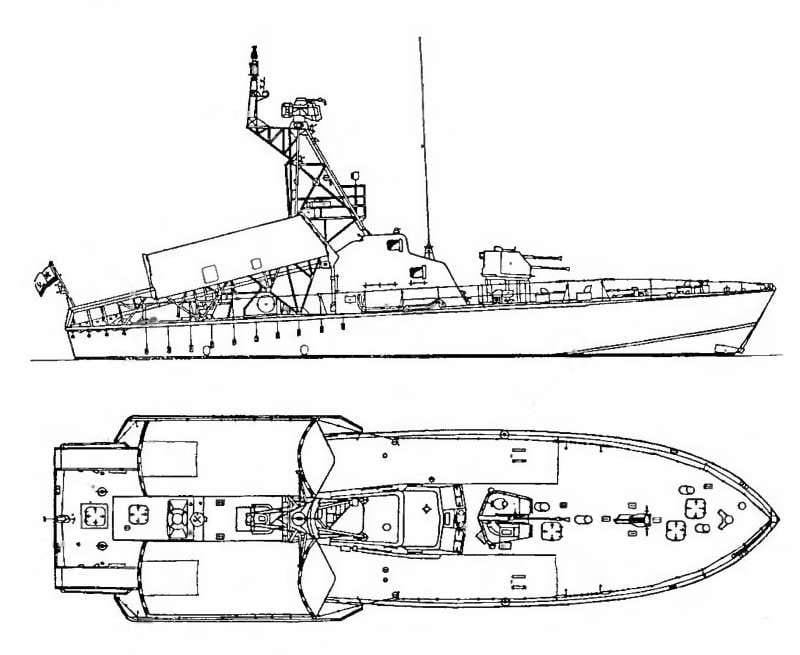
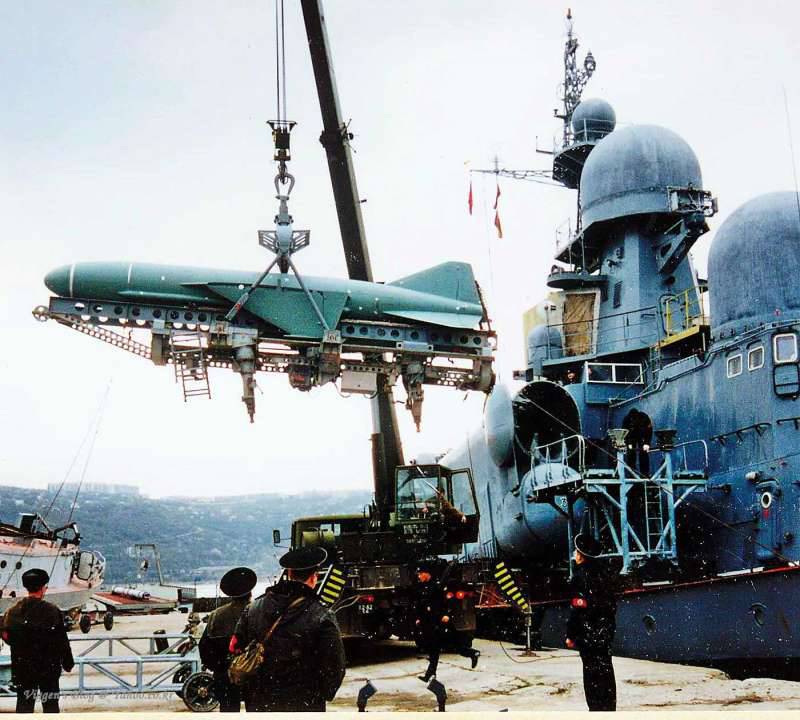
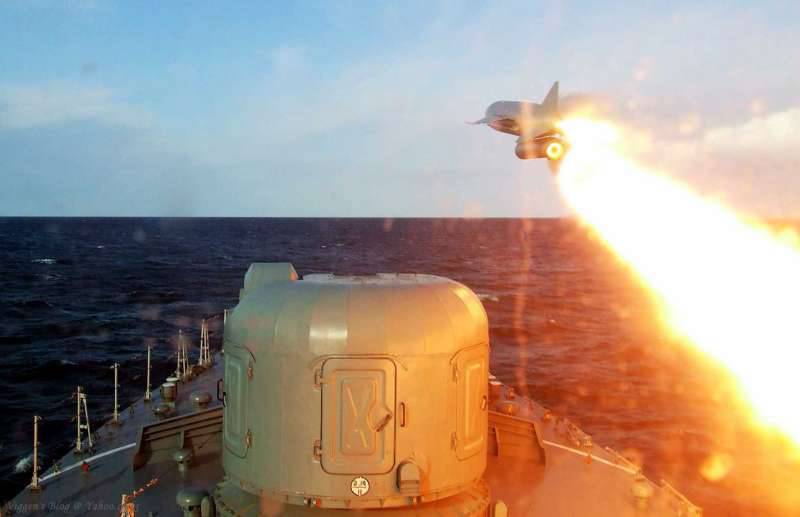
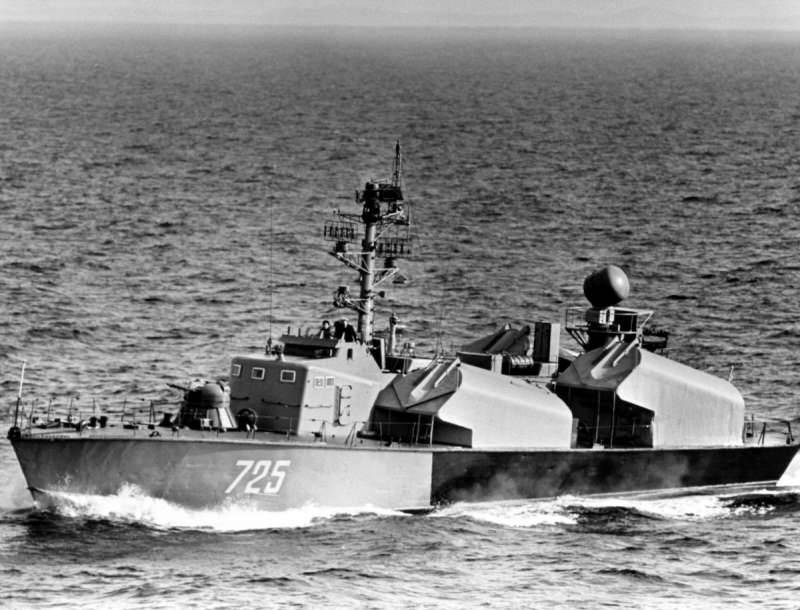

Information